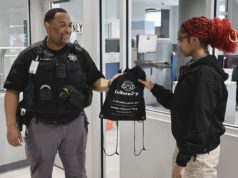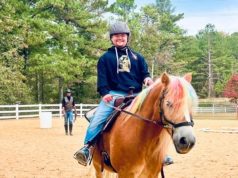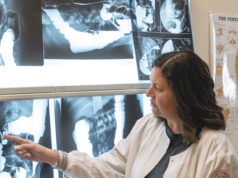
Wholebody Systems is a therapeutic fitness program that uses certified medical devices rather than traditional exercise equipment.
By Michael J. Pallerino
The path forward is not always a straight line. Oftentimes, the road that eventually takes us to where we want to be is paved with a series of twists and turns — challenges that inevitably make or break us. After studying business management and entrepreneurialism at Kennesaw State University, Alex Simmons started his professional career working with a small startup music store, where he helped teach private lessons to mostly school-aged kids.
As he began developing relationships with local schools, he saw an opportunity to offer after-school music programs as an enrichment course. The students didn’t need to come to the music store, the store could take the lessons to them. Melding the practices, he studied about developing business and creating value from underused resources. Alex methodically grew the platform to nearly 200 schools in three states.
They were promising times, until they weren’t. During that same stretch, Alex’s father was diagnosed with cancer. Watching his mentor and business partner fight a brief and brutal battle he would eventually lose, the experience changed Alex. “It was a very hard time in my life. My father’s death changed my whole view on health and wellness. I became obsessed with getting healthier. I began to take my health seriously and began to study the holistic approach to life.”
Driven by a new purpose, Alex shifted the entire scope of his exercise regimen, moving away from movements designed to make him look good to ones geared toward preserving his body. Exercises centered on posture and flexibility became his focus. About the same time, his mother introduced him to a new technology called bioDensity, which is designed to help people build stronger bones. After mentioning her desire to purchase one of the machines and open a strength clinic, Alex’s entrepreneurial senses were reawakened.
Delving once again into the concept of developing business and creating value, Alex created the Wholebody Systems (WBS) business model, a therapeutic fitness program that uses certified medical devices rather than traditional exercise equipment. The primary goal is to focus on gains in strength, bone density, flexibility, posture, and balance through clinically safe protocols. The premise is straightforward: Function comes before fashion (exercise for health, not aesthetics). “I had seen the profound impact it had on my physical well-being,” says Alex, owner and operator. “BioDensity represents something that I believe in very much. Longevity is directly tied to your spinal health. I wanted to share this with the world.”
Working smarter, not harder
Most people tend to believe that the longer and more intense their exercise session is, the more effect it will have. Alex is not one of those people. He believes that for any exercise program to work, you must take the time to truly identify the goals most important for health and longevity. Just working out to get in shape is not a sustainable solution.

To help their clients understand the importance of being specific with their goals, Wholebody Systems takes every client through a functional assessment to help highlight the areas they need to work on. A big part of the process is understanding the distinction between cardiovascular exercise and resistance training. “Everyone knows you need to get your heart rate up for heart health and metabolic management,” Alex says. “Only recently has resistance training — challenging the muscles and bones for strength — become prevalent in the conversation about health and wellness. Up until the last couple of decades, the population at large thought that weightlifting was only for athletes and bodybuilders.”
Wholebody Systems provides an option for resistance training for people who just want to stay healthy and strong, not to lose weight or build big muscles. Working toward those types of goals involves entirely different protocols and techniques, which is why the WBS focuses on the use of technology and advanced training.
“It’s all about the technology,” Alex says. “We use tools that provide a stimulus to the body that causes an adaptive response in your muscle and bone tissue. Traditional methods require multiple movements, sets, and repetitions to achieve this same result. I like to explain it like this: Science and technology are constantly improving the way we live our lives. The science we have learned about the body tells us how to achieve changes in your muscle tissue, bone tissue, and nerve function by using certain stimuli. The engineers that created the technology we use have crafted a vessel to deliver these stimuli in a safe, effective and extremely efficient way.”
Mano-a-mano
Stepping into the WBS program gives you a one-on-one experience with a personal exercise therapist using some of the most advanced fitness technology on the market. The program started as an adjunct to other services, located inside chiropractic facilities. Over the years they have transformed into a much more robust clinical fitness service.
New clients must go through a Start Up process, which begins with a functional evaluation where they get measurements in strength, flexibility, posture, and muscular endurance. The Wholebody Systems team takes the data and conducts a thoughtful analysis to determine the priorities for the program. Everything is summarized along with specific recommendations in a report that every client receives. From there, the clients set up conferences with the clinic director to review the report and decide on a plan.
“A lot of our clients come to see us specifically for Osteoporosis,” Alex says. “One of the tools we use was designed specifically to reverse bone loss. We have been doing that with great success since we opened in 2011. It’s funny because when I say Osteoporosis everyone usually thinks of old people. But that is completely untrue. Most of our clients are between 50-55 years old. That is when their doctors are ordering their first bone density scan.”
Wholebody Systems’ client list looks like this:
- 50-plus postmenopausal women needing bone density (Osteoporosis)
- The active aging community who wants to stay active
- Anyone who struggles with traditional forms of exercise
- People living with chronic muscle and joint pain
- Those trying to avoid or recover from surgery
- Non-exercisers that want to fight the effects of aging
The WBS program operates on each user’s preference. For example, it has clients who visit once per week to those who come three to four times per week. Some perform 15-minute sessions for strength, while others do 30-minute sessions for stretching and flexibility. The goal is to be sure that the specific purpose to each session is applied. “We don’t want to be just shooting in the dark,” Alex says. “The overlying theme is we want to do exercises that help maximize our musculoskeletal function. If you have tight hamstrings and lower back pain, we don’t want to just go to work on your arms and shoulders. It starts with making a small change that you can maintain. I see a lot of people fail when they try to change everything overnight, realize it is too overwhelming, and then they give up.”
Staying the course
As steady as success can be, Alex is quick to remind himself that the twists and turns in the road are always present. The most recent reminder was the once-in-a-lifetime pandemic, which created a whirlwind that tested his resolve like no other. In March 2020, just as the world was becoming familiar with COVID, Wholebody Systems lost 75 percent of its clients due to quarantine regulations. “I was not sure the business would survive,” Alex recalls.

Slowly, clients started to trickle back in after a few months. What became more apparent than anything else was that the Wholebody Systems approach was necessary. With the spotlight on the importance of health and wellness shining brighter than ever, there also was a light shining on the fragility of the medical system. “There was a paradigm shift in the general population that we are all accountable for our own health,” Alex says. “And Wholebody Systems embodies everything that has come out of this revelation.”
In March 2021, Kim Brinson was working as a yoga instructor/personal trainer and part owner of another fitness studio in Smyrna when Alex reached out about working together with his clients. Several months later, Kim decided not to renew her lease and asked about coming on board in a larger capacity with WBS. After several conversations, they inked a deal making her a partner in the Smyrna office, which they eventually converted into their first standalone facility.
In July, Alex and Kim plan to open their second standalone facility in East Cobb, which will be located behind the Whole Foods on the corner of Johnson Ferry and Roswell Road. The move is the next step toward achieving Alex’s long-term goal — franchise sales in spring 2024.
Where the road leads is something Alex places in faith. After starting his company in 2011, he once again methodically plotted the path forward. From renting space inside chiropractic offices to standalone facilities, his focus will always be on the process — a therapeutic fitness approach to helping people live healthy, longer, and more fulfilling lives.



